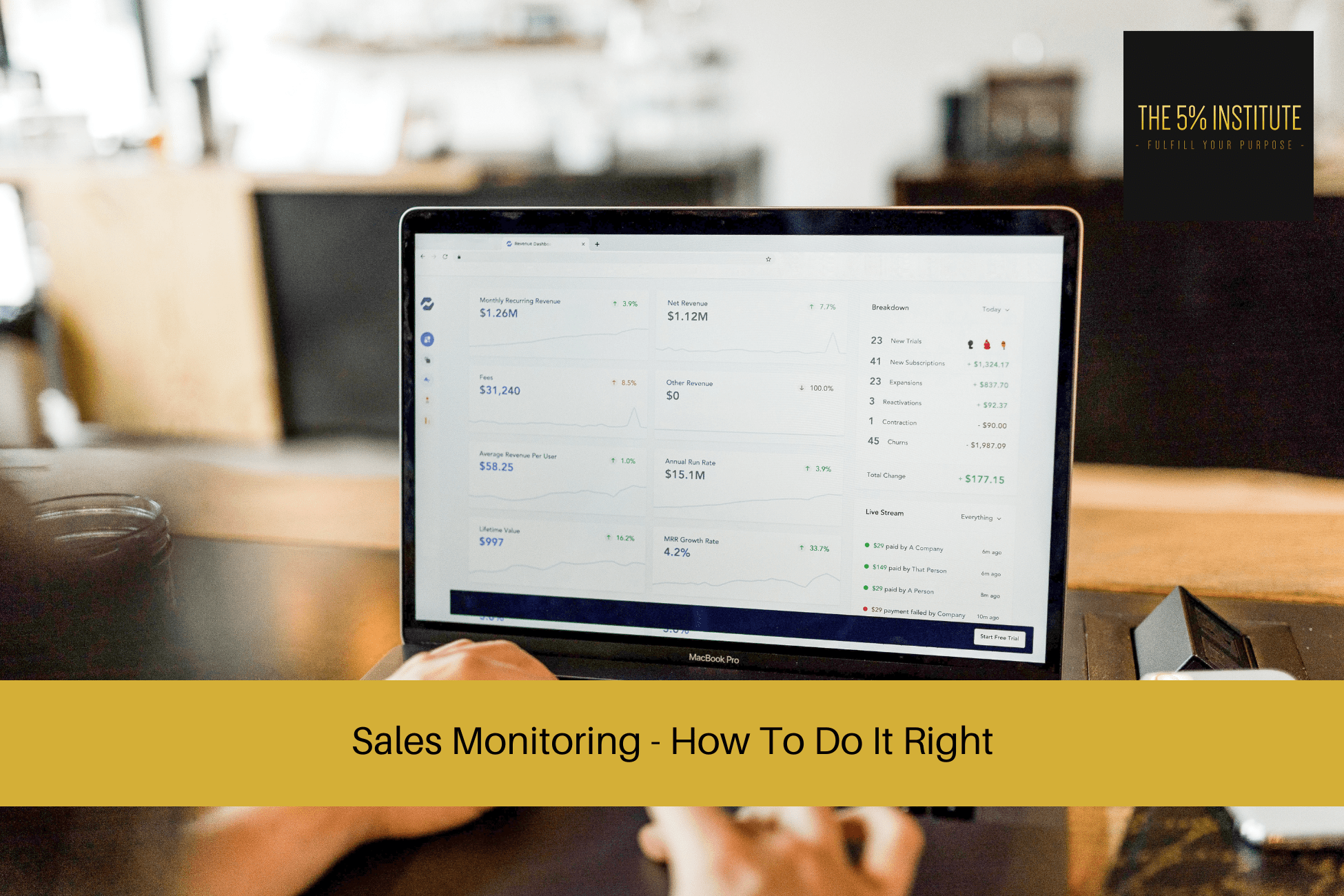
Sales Monitoring – How To Do It Right
In today’s competitive business landscape, sales monitoring plays a crucial role in driving growth and ensuring the success of organizations.
By closely tracking sales activities, companies can gain valuable insights into their performance, identify areas for improvement, and make data-driven decisions to boost revenue.
In this article, we will explore the significance of monitoring, discuss key metrics and tools, delve into best practices, and explore the impact of tracking activities in the digital age.
Importance of Sales Monitoring
By consistently tracking activities and data, companies can identify trends, spot opportunities, and address potential issues in a timely manner.
It enables organizations to measure their progress towards goals, evaluate the effectiveness of sales strategies, and make informed adjustments to drive growth.
Key Metrics for Sales Monitoring
To effectively monitor sales, organizations need to focus on key performance indicators (KPIs) that provide meaningful insights into their sales activities.
These metrics may include sales revenue, conversion rates, customer acquisition costs, sales cycle length, customer lifetime value, and sales team performance.
By analysing these metrics, companies can identify trends, evaluate their sales strategies, and optimize their processes for better results.
Tools and Software for Monitoring
In the digital era, businesses have access to a wide range of tools and software that simplify and streamline the process of sales monitoring.
Customer relationship management (CRM) systems such as Salesforce, HubSpot, and Zoho CRM offer comprehensive sales tracking features, allowing businesses to monitor leads, opportunities, and customer interactions.
Additionally, there are specialized sales analytics platforms like InsightSquared and Gong that provide advanced analytics capabilities to uncover valuable sales insights.
Steps to Implement Effective Sales Monitoring
Implementing effective monitoring requires a structured approach.
Organizations should:
Define Clear Objectives
Clearly define the objectives and goals they want to achieve through sales monitoring.
This ensures that the monitoring process aligns with the organization’s strategic priorities.
Establish Relevant Metrics
Identify the most relevant sales metrics based on the organization’s industry, business model, and goals.
These metrics should align with the defined objectives and provide actionable insights.
Collect and Analyse Data
Gather sales data from various sources, including CRM systems, sales reports, and customer feedback.
Analyse the data to identify trends, patterns, and areas for improvement.
Regularly Review Performance
Regularly review and assess sales performance against the established metrics.
This allows organizations to track progress, identify deviations, and take corrective actions as needed.
Adapt and Optimize
Continuously adapt and optimize sales strategies based on the insights gained from sales monitoring.
By leveraging data-driven insights, organizations can refine their approaches and drive better sales results.
Benefits of Sales Monitoring
Sales monitoring offers several benefits to businesses:
Enhanced Decision Making
By providing real-time insights into sales performance, organizations can make informed decisions and adjust their strategies promptly.
Improved Sales Performance
Monitoring helps identify bottlenecks in the sales process, enabling organizations to optimize their strategies and enhance overall sales performance.
Increased Revenue
By closely monitoring activities, companies can identify opportunities for upselling, cross-selling, and improving customer retention, leading to increased revenue.
Better Customer Understanding
Monitoring provides valuable customer data, enabling organizations to gain a deeper understanding of their customers’ preferences, needs, and pain points.
Competitive Advantage
Organizations that effectively track sales activities gain a competitive edge by quickly adapting to market changes, identifying emerging trends, and capitalizing on new opportunities.
Challenges in Sales Monitoring
While sales monitoring offers numerous benefits, it also comes with certain challenges:
Data Accuracy and Integration
Ensuring the accuracy and integration of data from various sources can be complex, requiring effective data management practices and integration between different systems.
Resistance to Change
Implementing monitoring processes may face resistance from sales teams accustomed to traditional methods.
Effective change management strategies are essential to overcome resistance and ensure successful adoption.
Privacy and Data Security
With the increasing amount of customer data involved in sales monitoring, organizations must prioritize privacy and data security to maintain customer trust and comply with relevant regulations.
Data Overload
Managing and making sense of vast amounts of sales data can be overwhelming.
Organizations need to leverage analytics tools and technologies to extract meaningful insights and avoid information overload.
Sales Monitoring Best Practices
To maximize the effectiveness of sales monitoring, organizations should follow these best practices:
Set Realistic Goals
Establish realistic and achievable goals aligned with the organization’s overall objectives and resources.
Standardize Processes
Implement standardized sales processes and workflows to ensure consistency and enable accurate data collection.
Foster Collaboration
Encourage collaboration and information sharing between sales teams, marketing departments, and other relevant stakeholders to gain comprehensive insights.
Invest in Training and Technology
Provide regular training to sales teams on sales monitoring techniques and tools.
Invest in technology that supports efficient data collection, analysis, and reporting.
Continuously Improve
Regularly review and improve sales monitoring processes based on feedback, changing market conditions, and technological advancements.
Sales Monitoring in the Digital Age
In the digital age, sales monitoring has become even more critical.
With the availability of vast amounts of customer data and advanced analytics tools, organizations can gain deeper insights into customer behaviour, preferences, and purchasing patterns.
By leveraging technologies like artificial intelligence and machine learning, monitoring can uncover hidden trends and predict future sales opportunities.
Sales Monitoring and Customer Relationship Management (CRM)
Sales monitoring and CRM go hand in hand.
CRM systems not only enable efficient data collection and storage but also provide comprehensive sales tracking and reporting functionalities.
By integrating your tracking with your CRM, organizations can have a holistic view of customer interactions, sales activities, and performance metrics, facilitating effective relationship management and informed decision making.
Integrating Sales Monitoring with Other Business Processes
Sales monitoring should be integrated with other key business processes to maximize its impact.
By aligning monitoring with marketing efforts, product development, and customer service, organizations can ensure a cohesive approach that drives customer satisfaction and business growth.
Predictive Sales Monitoring
Predictive sales monitoring leverages advanced analytics and predictive modelling techniques to forecast future sales trends and outcomes.
By analysing historical data and identifying patterns, organizations can make accurate predictions, optimize their strategies, and proactively address challenges.
Sales Monitoring and Team Performance
Sales monitoring is instrumental in evaluating and enhancing sales team performance.
By tracking individual and team-level metrics, organizations can identify top performers, implement targeted coaching, and foster healthy competition, leading to improved sales results and team morale.
Conclusion
Effective sales monitoring is a critical component of successful business growth.
By closely tracking sales activities, analysing key metrics, and leveraging advanced tools, organizations can gain valuable insights, make informed decisions, and optimize their sales strategies.
Effective monitoring empowers businesses to drive revenue, enhance customer understanding, and gain a competitive edge in the dynamic marketplace.
Frequently Asked Questions (FAQs)
Q1: How often should sales monitoring be conducted?
A1: The frequency of sales monitoring depends on the organization’s needs and sales cycle. However, regular monitoring, such as monthly or quarterly reviews, is recommended to track performance trends effectively.
Q2: What are the common challenges in implementing sales monitoring?
A2: Common challenges include data accuracy and integration, resistance to change, privacy and data security concerns, and managing data overload.
Q3: Can sales monitoring improve customer relationships?
A3: Yes, monitoring provides valuable insights into customer behaviour and preferences, enabling organizations to personalize their interactions and enhance customer relationships.
Q4: What role does technology play in sales monitoring?
A4: Technology, such as CRM systems and sales analytics tools, plays a crucial role in facilitating efficient data collection, analysis, and reporting for sales monitoring.
Q5: Is predictive sales monitoring effective?
A5: Predictive sales monitoring can be highly effective in forecasting sales trends and optimizing strategies based on data-driven predictions.
Want To Close Sales Easier?
Are you committed to closing sales a lot easier, and consistently?
If so, you should check out our self-paced and affordable online sales training program; The 5% Sales Blueprint.
It’ll give you everything you need to close sales consistently.
To learn more, simply click on the link below for more information.
Our Online Sales Training Program – The 5% Sales Blueprint.



